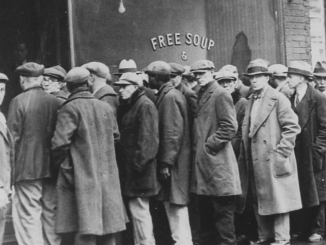In the wake of the collapse of Lehman Brothers, the related near-failure of Citigroup (C) and the shotgun weddings of J.P. Morgan (JPM) and Washington Mutual, Bank of America (BAC) with Merrill Lynch, and Wells Fargo (WFC) with Wachovia, there was an extraordinary policy response form both the Federal Reserve, and from the Federal Government.
There were many facets of this response, although the two most prominent were the TARP and the Stimulus Act, or ARRA. The big question is what would have the economy looked like if the policy makers in the both the Bush and Obama administrations had sat back and done nothing. It is, of course, impossible to prove a counter-factual, but there are economic models that can be used to try to answer the question.
The Blinder-Zandi Paper
Alan Blinder, a professor at Princeton, and Mark Zandi of Moody’s Economics (and one of the chief economic advisors to the McCain Campaign) have attempted to do just that. In a long — but very readable — paper (see here), they argue that without any of the responses, 2010 GDP would have been 11.5% lower than it is likely to turn out, payroll employment would have been 8.5 million lower and we would now be facing outright deflation rather then just being at risk of falling into it, as we are now).
As for the Stimulus Act (although they do caution that disentangling the effects of all the moving parts of the government reaction is difficult), they estimate that it alone raised GDP by 3.4%, kept unemployment 1.5% lower than it would have been (in other words, U-3 unemployment would now be at 11.0% rather than at 9.5%) and saved or created 2.7 million jobs. Their findings on the effects of the ARRA are broadly consistent with the findings of the non-partisan Congressional Budget Office (CBO).
They say “We do not believe that it was a coincidence that the turnaround from recession to recovery occurred last summer, just as the ARRA was providing its maximum economic benefit.”
I have to agree with them. However, I was arguing during the debate over the ARRA that the proposed solution was too small, and needed to be substantially larger given just how messed up the economy was in the wake of the freezing up of the credit markets. Now the effects of the stimulus are wearing off, and — surprise, surprise — the economy is starting to slow again. However, there is not the political will to do anything about it at this point, or at least not enough political will to be able to muster the 60 votes needed in the Senate to overcome a filibuster to address the problem.
A Double-Dip?
However, the ARRA, along with the Fed keeping rates at very low levels, has been enough to partially prime the pump. Thus I don’t think that we will be falling back into a double-dip recession, though the risks of it happening are increasing. We are much more vulnerable to an external shock pushing us back into a recession.
The emphasis on cutting spending right now to bring down the deficit is misguided and increases the risk of a double dip. That is exactly the policy followed by President Hoover in the Great Depression. The result was that most of the increase in the ratio of debt-to-GDP occurred under Hoover, not FDR. If austerity programs cause the economy to go into another recession, the deficit will end up being higher, not lower. Austerity right now will bring us all pain and no gain.
But Deficits DO Matter
Of course, we do have to address the long-term structural deficit. Ultimately, that comes down to bending the cost curve on health care costs. The Health Care reform bill did a little bit on that front, but not enough. Letting the Bush tax cuts on the wealthy expire will also help make a major dent in the long-term deficit. However, given the current fragile state of the economy, raising taxes makes no more sense than cutting spending.
Even so, a dollar of aid to state and local governments to prevent them from having to lay off teachers and police provides much more economic benefit than a dollar of lower taxes in the hands of someone who is already making $500,000 a year. The economy did just fine when the top tax rate was 39.5% under Clinton — much better than it did when it was at 35% under Bush. Still, we might want to phase-in the return to Clinton-era tax rates over two or three years rather than doing it all at once in a fragile economy.
The Blinder-Zandi paper is very interesting, and is well worth reading.
BANK OF AMER CP (BAC): Free Stock Analysis Report
JPMORGAN CHASE (JPM): Free Stock Analysis Report
CITIGROUP INC (C): Free Stock Analysis Report
WELLS FARGO-NEW (WFC): Free Stock Analysis Report
- Bulenox: Get 45% to 91% OFF ... Use Discount Code: UNO
- Risk Our Money Not Yours | Get 50% to 90% OFF ... Use Discount Code: MMBVBKSM
Disclaimer: This page contains affiliate links. If you choose to make a purchase after clicking a link, we may receive a commission at no additional cost to you. Thank you for your support!





Leave a Reply